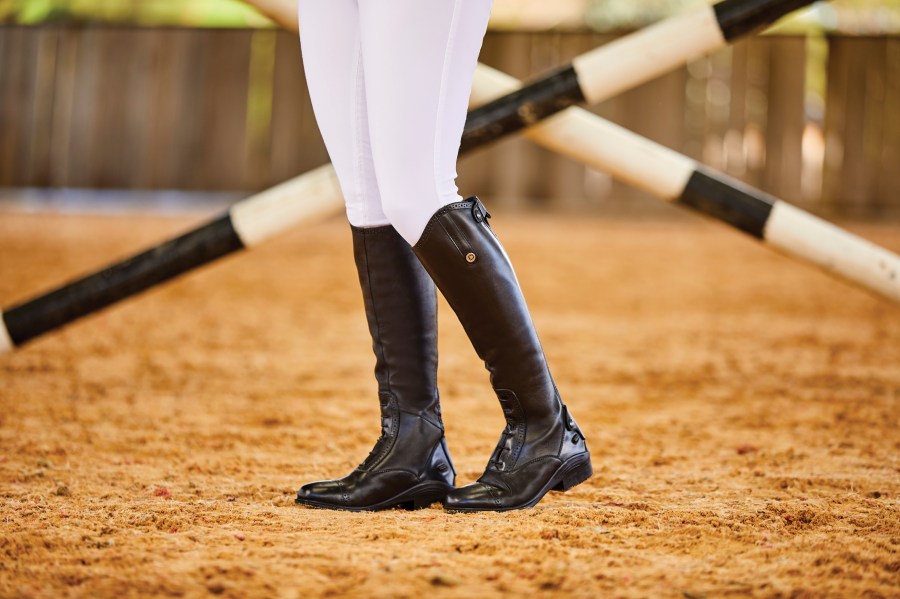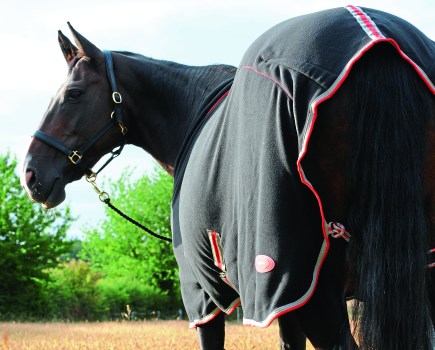However long you spend in the saddle, investing in a well-fitting pair of long riding boots will ensure that this time is both safe and comfortable. Choosing the right pair and taking good care of them means that your boots will last for years, but with so many styles made by myriad manufacturers on the market where do you start?
Safety and protection are key, but the style you choose depends on your personal preferences, budget, preferred discipline, age and even body shape.
Which style?
There are a few decisions to make when it comes to what style of boots to buy. There are two styles available — field and dress boots.
Field boots
These have lacing at the front of the ankle that enhances their comfort and fit. The lacing is usually elasticated and makes the boots more flexible around the ankle area. These are a popular choice for all disciplines.
Dress boots
These are traditional long riding boots that boast a plain front. These are frequently seen at dressage competitions.
Zip or pull-on – which will suit you?
Both types of boot come in pull-on or zip styles. The most popular choice is a boot that has a concealed zip that runs up the back of the calf. Alternatively, some boots feature a zip that goes up the front. Both will make getting your boots on and off a lot easier.
Size and fit is key
Most manufactures produce off-the-peg sizes in a variety of calf widths and leg lengths. Alternatively, you can opt for made-to-measure boots, but these are often more expensive.
Making sure that boots fit well is essential for rider comfort. There is nothing worse than a pair that rubs or is uncomfortable.
As well as your foot size, you will need to take two other measurements:
- Your calf at the widest point.
- The length of your lower leg, usually taken from the back of the knee to the floor.
To get accurate measurements, use the tape measure when you are sitting down, with your knee bent and your foot flat on the floor.
When you are measuring or trying on new boots, wear breeches and socks so that you get a realistic idea of how the boots fit. Also, remember to try on both boots as people rarely have equal sized feet and calves.
Bear in mind that with wear most boots will drop slightly, so make sure that you don’t opt for a pair that is too short. Field boots are often made from softer leather and can drop by up to 2in compared to dress boots, which are usually made from stiffer leather that will drop very little.
Breaking in your boots
Before riding in your new boots it is advisable to break them in. The area of the boot that can be a little uncomfortable to begin with is around the ankle. Wearing boots around the house for short periods of time is a good idea: walk up and down the stairs, or stand on the edge of a step and flex your ankles up and down.
Applying leather conditioner to the ankle area of the boots inside and out (as long as the lining is leather) can help to soften them.
Boot care
Take good care of your boots and they should last for years. Here are three steps to follow to keep your boots in great condition:
- Remove any dirt and grease with a damp sponge after every use. Allow the leather to dry naturally. Don’t be tempted to put damp boots next to a radiator — it makes the leather too dry and will cause it to crack.
- Polish your riding boots regularly and apply a leather conditioner to keep the leather nourished.
- Use boot trees to help keep your boots in the correct shape, and store them in a boot bag to keep them clean and dry.
Shop for long riding boots
Dublin Evolution Tall Field Boots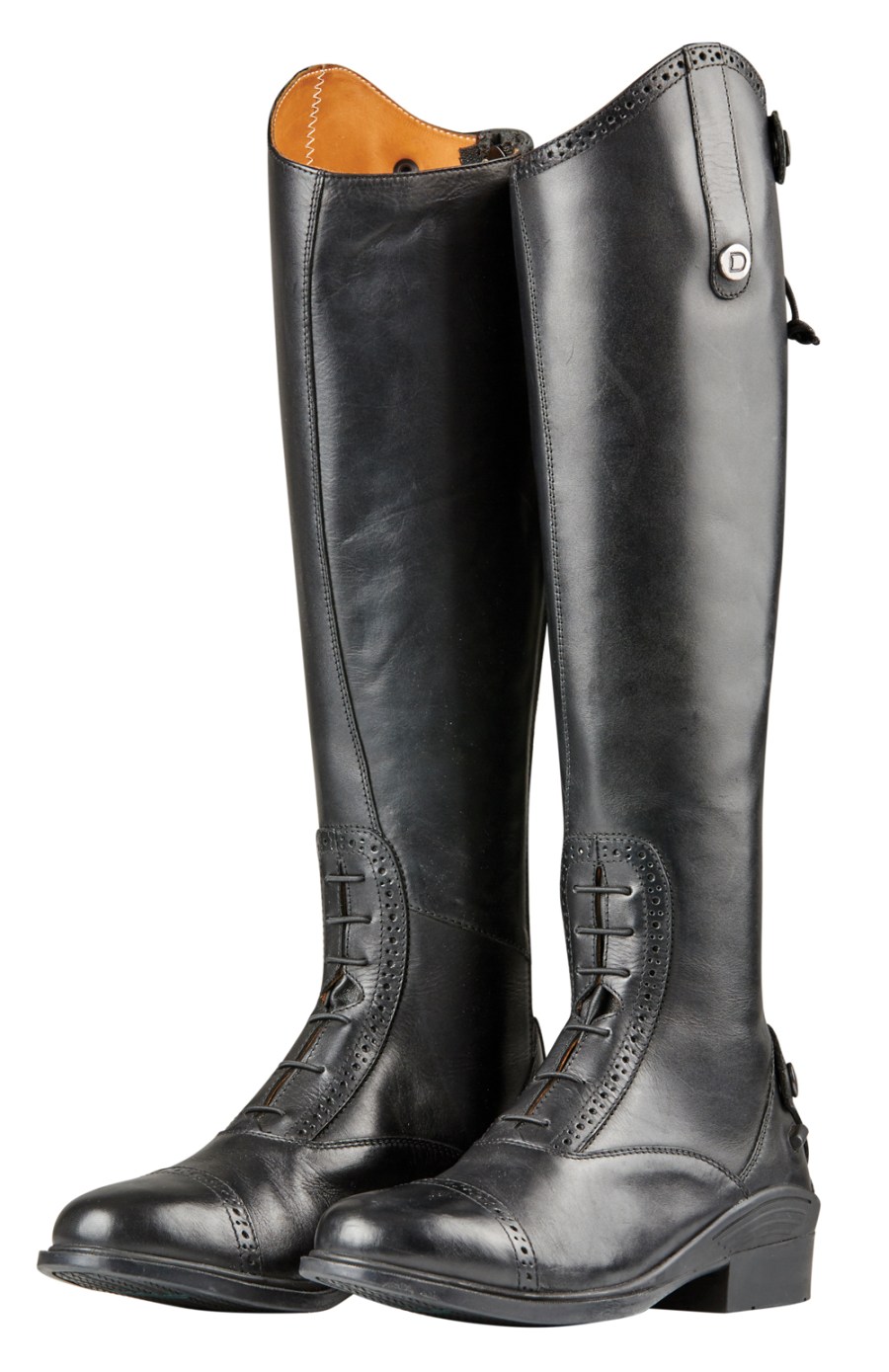
RRP £242.99
Colour: Black
Sizes: 4 – 8 in regular, regular short and wide short
These boots are made from full grain European leather with a full grain leather lining. They have a full-length elasticated panel and rear zip to ensure a perfect fit. The fact that they are contoured through the ankle area makes them comfy to wear both in and out of the saddle. The RCS memory foam and PU footbed add to the comfort factor, while a moulded sidewall provides extra ankle support and protection.
HY Equestrian Union Jack Riding Boots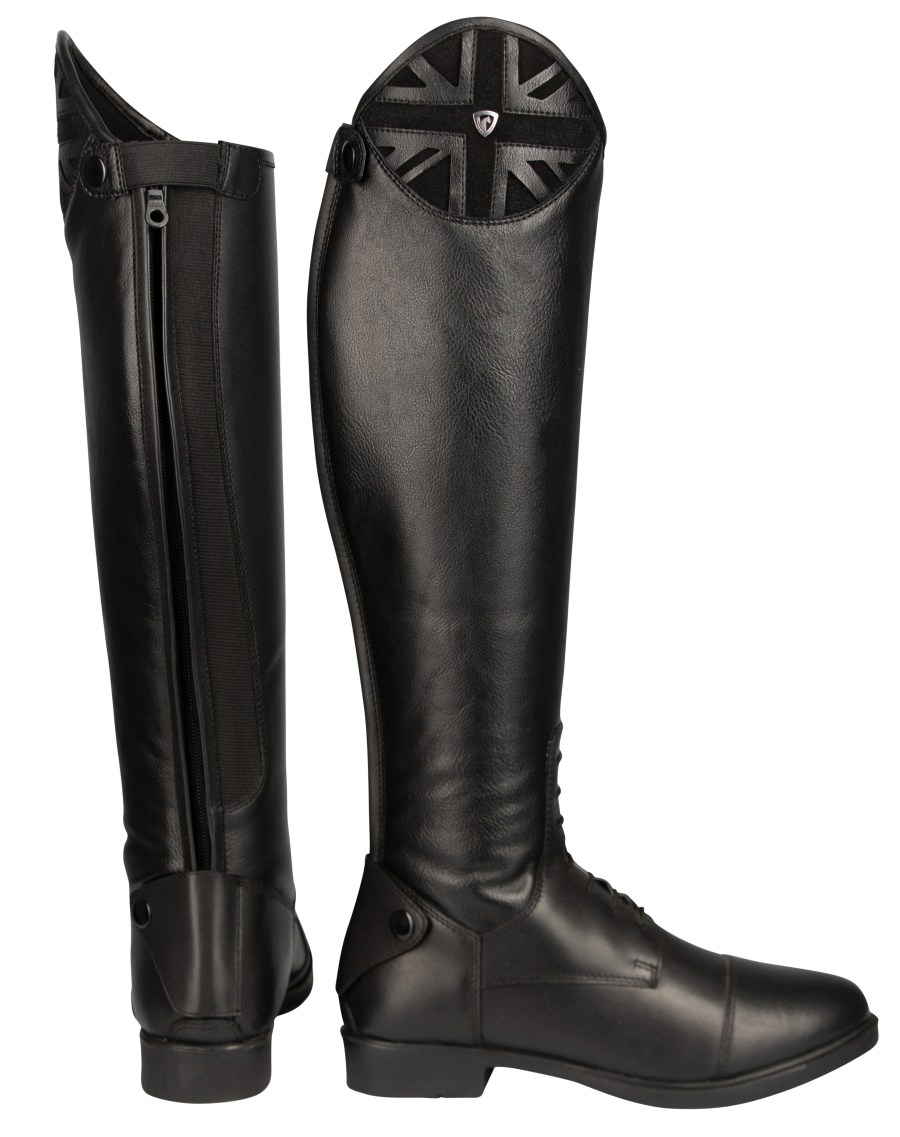
RRP £83.99 – £114.99
Colour: Black
Sizes: 36 – 41 (adult), 1 – 3 and 10 – 13 (child)
These patriotic boots are designed using a combination of real and synthetic leather, making them both supple and comfortable. They feature a suede Union Flag at the top and an elasticated back panel for comfort and a close-contact feel. They also have a full-length rear zip with a secure top press stud closure, a spur guard at the bottom and a durable anti-skid sole for stability.
Premier Equine Bilancio Ladies Leather Field Tall Riding Boot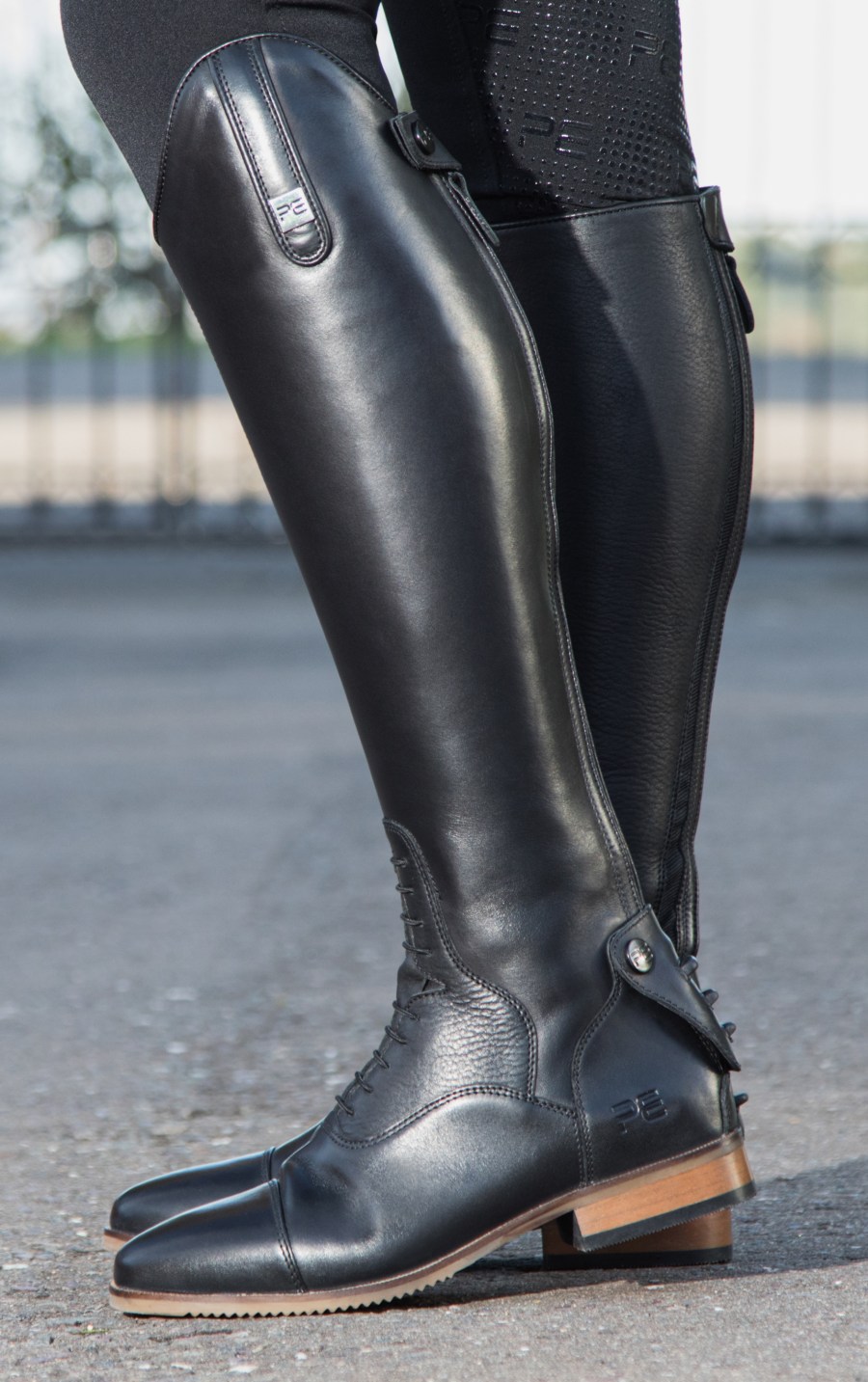
RRP £155
Colours: Black, brown
Sizes: 4 – 8 in regular or wide calf
Crafted from European leather, these boots have a supple feel from first use. The elastic lace panel increases flexibility and comfort around the ankle area and a full-length rear zip makes them easy to slip on and off. The design provides a close-contact, sculpted fit that contours around the rider’s calf thanks to a discreet elastic panel. The leather heel flap features a double spur rest.
EGO7 Orion Tall Riding Boots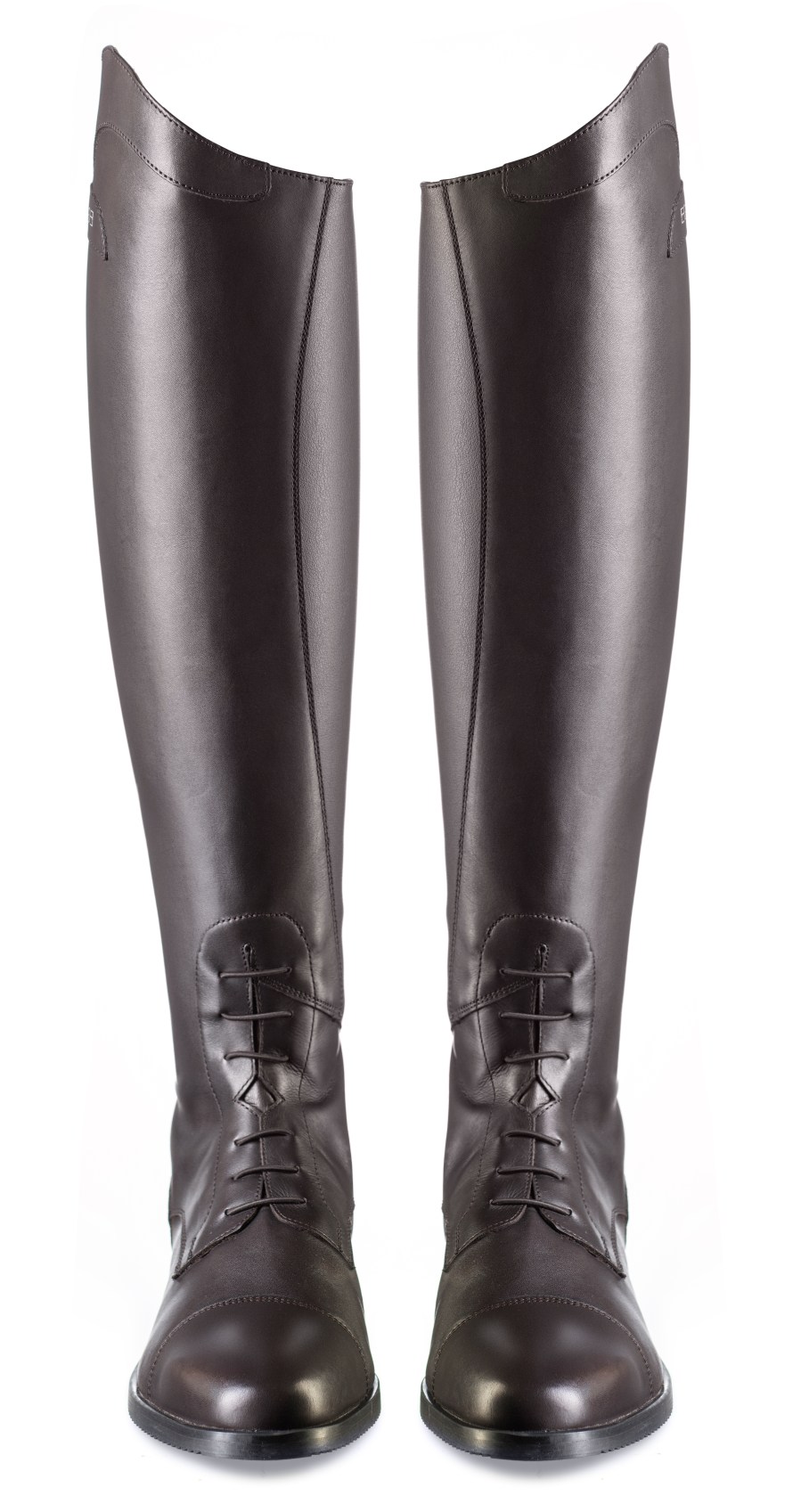
RRP £315
Colours: Black, brown
Sizes: 34 – 45 in a selection of height and calf options
A high-end, modern style lace-up jumping boot that is made from full-grain leather with elastic lace detail and an extra soft leather front, the full-length panel protects the rider’s inner calf and guarantees a great contact with the horse. All EGO7 models have a rear elastic band, while the innovative E-tex material gives the boots extreme wear resistance and ensures that they are easy to take care of.
Steeds Long Riding Boots Porto Alegre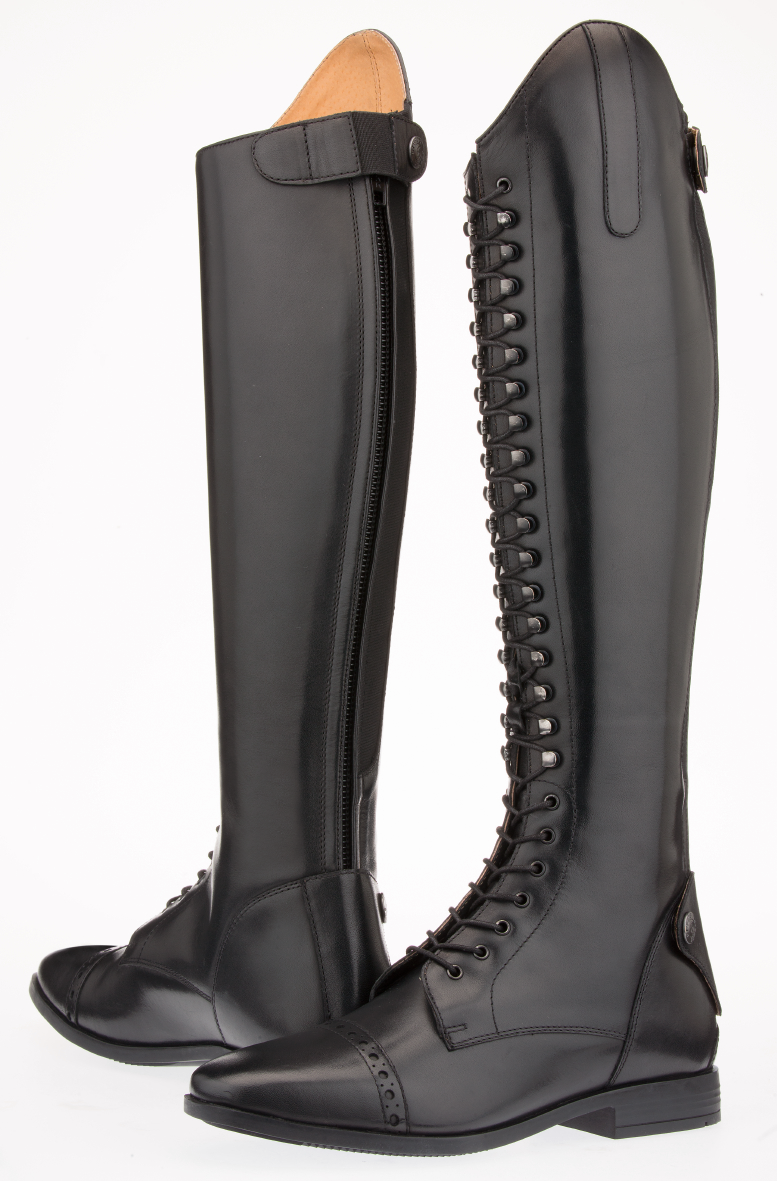
RRP £199
Colour: Black
Sizes: 3 – 8 in slim or regular
These elegant leather riding boots with front lacing are made of full-grain Brazilian cowhide. Once the lacing is adjusted to fit, the wearer only needs to close the zip at the back. There is a leather tongue incorporated behind the lacing so that the boot can be adjusted to different calf widths. There is also an integrated elastic insert on the outside of the shaft for added comfort.
Toggi Avebury Long Riding Boots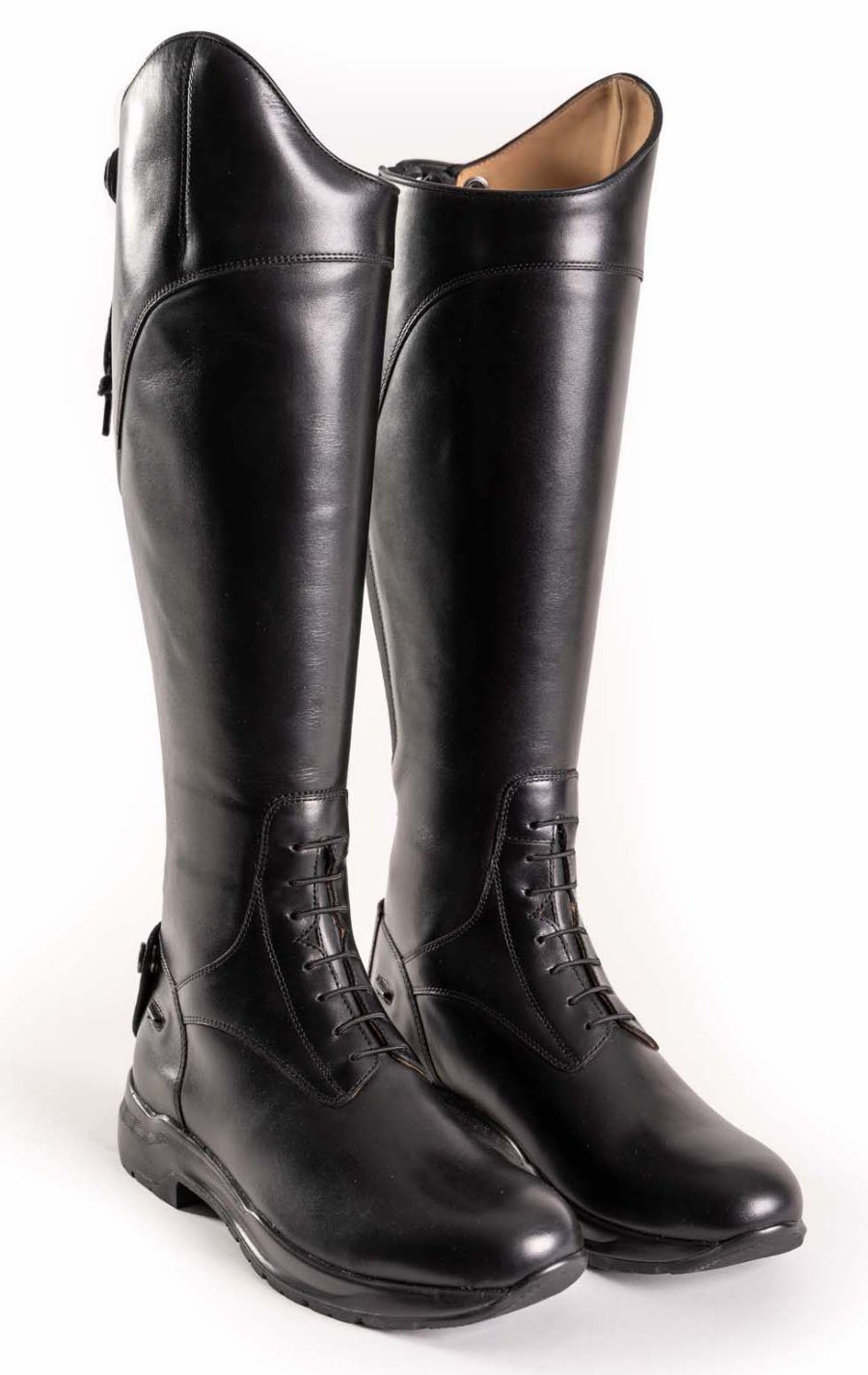
RRP £247.50
Colour: Black
Sizes: 36 – 43 in slim, regular and wide fitting
Toggi’s Avebury Boots are crafted from premium full-grain leather and have a rear full-length zip. For rider comfort these boots have an elasticated front panel and an anatomically contoured footbed and sole. They also have a waterproof and breathable membrane up to ankle height, plus a smart cavalry-style top.
Receive six issues of Your Horse magazine for just £15!

